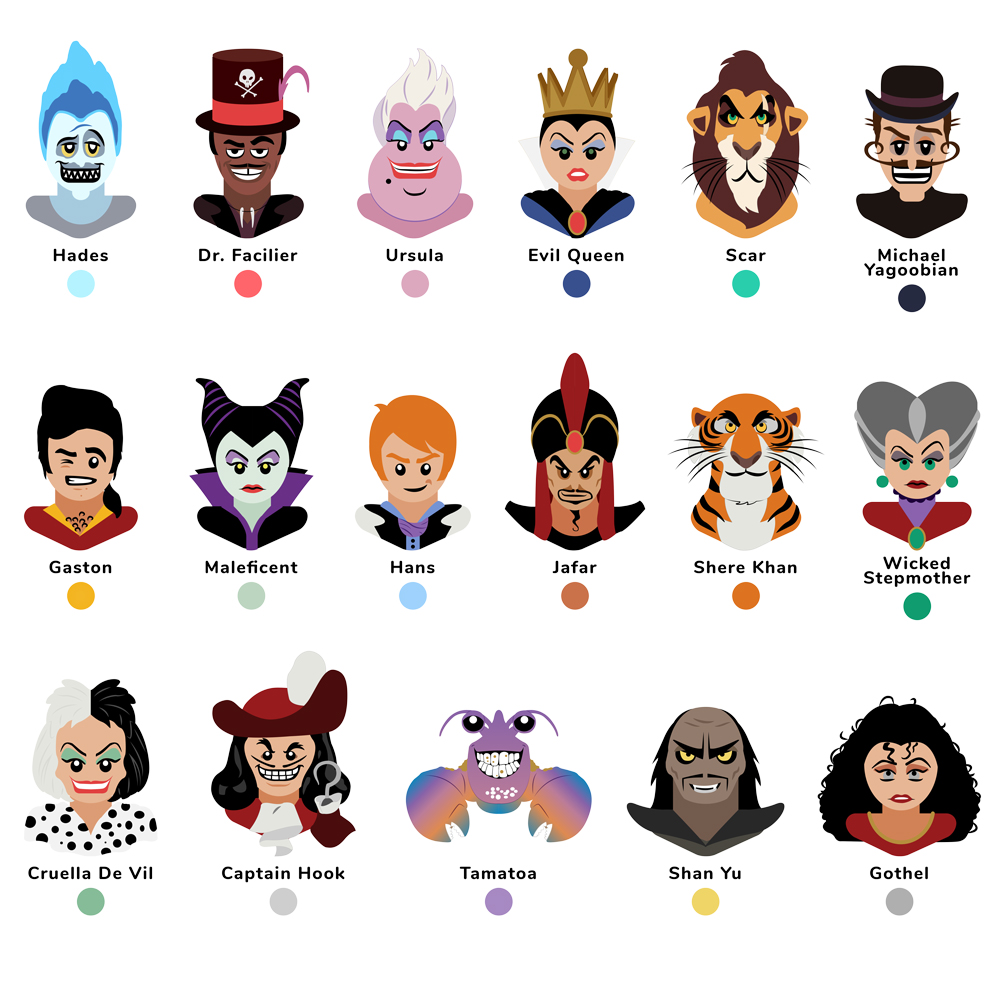A villain's name is more than just a label; it's a statement, a whisper of their dark intentions, a chilling premonition of the chaos they'll unleash. From the sinister whispers of ancient myth to the complex narratives of modern fiction, the names of malevolent characters hold a unique power, shaping our perception of their wickedness and adding depth to the stories they inhabit. But what makes a villain's name truly effective? What's the secret sauce that transforms a simple word into an embodiment of evil?
The art of naming antagonists is a delicate dance between sound and meaning. A name can evoke a sense of dread, suggest hidden depths, or even hint at the villain's tragic backstory. Consider the chilling simplicity of "Darth Vader" or the chilling elegance of "Voldemort." These names, imbued with dark connotations and powerful sounds, instantly signal the characters' malevolent nature.
Throughout history, villainous names have drawn inspiration from various sources. Mythology, with its pantheon of gods and monsters, offers a rich tapestry of menacing monikers. Literature, too, has contributed significantly, with authors crafting names that resonate with the specific evils their characters represent. From the biblical Lucifer to Shakespeare's Iago, these names have become synonymous with treachery, ambition, and pure, unadulterated evil.
The importance of a well-crafted villain name cannot be overstated. It's the first impression, the calling card of a character whose purpose is to disrupt, destroy, and challenge the hero's journey. A memorable name can elevate a villain from a simple obstacle to a truly iconic figure, leaving a lasting impression on the audience long after the story concludes.
However, creating a compelling villain name isn't without its challenges. The name must be memorable, but not overly silly or cartoonish. It should reflect the character's personality and motivations without being too revealing. Finding the perfect balance between ominous and believable is crucial for creating a truly impactful antagonist.
One effective technique is to use names that evoke specific emotions or imagery. Names with sharp consonants, like "Malvolio" or "Cruella," can suggest a sense of cruelty or sharpness. Similarly, names with darker vowels, like "Mordred" or "Sauron," can evoke a sense of mystery and foreboding.
Three key benefits of a strong villain name include memorability, enhancing character development, and contributing to the overall narrative impact. A memorable name ensures the villain sticks in the minds of the audience, making them a more impactful figure. A well-chosen name can also deepen the character's development, providing subtle hints about their personality and motivations. Finally, a strong villain name adds to the narrative's overall impact, elevating the story's tension and making the conflict between hero and villain more compelling.
Advantages and Disadvantages of Striking Villain Names
| Advantages | Disadvantages |
|---|---|
| Memorable | Can be clichéd |
| Enhances character | Difficult to create |
| Adds to narrative impact | Can be unintentionally comical |
Five best practices: 1. Research: Explore existing villain names for inspiration. 2. Consider the character's background and motivations. 3. Experiment with different sounds and combinations. 4. Test the name out loud to ensure it flows well. 5. Get feedback from others.
Examples: Darth Vader, Voldemort, Hannibal Lecter, Joker, Maleficent.
Challenges: 1. Avoiding clichés. 2. Creating a name that is both memorable and believable. 3. Finding a name that fits the character's personality. 4. Ensuring the name isn't too similar to existing villain names. 5. Balancing originality with familiarity.
FAQs: 1. What makes a good villain name? 2. Where can I find inspiration for villain names? 3. How do I avoid clichés? 4. How long should a villain name be? 5. Should a villain name have a meaning? 6. How do I choose the right tone for a villain name? 7. Should I use a real name or a made-up name? 8. How do I make sure my villain name isn't already taken?
Tips: Play with word origins, explore different languages, and consider using alliteration or assonance.
The power of a well-crafted villain name should never be underestimated. It's the first step towards creating a truly memorable antagonist, a character who embodies the darkness and challenges the hero's resolve. From the subtle nuances of their motivations to the grand sweep of their evil plans, a villain's name sets the stage for their reign of terror. By carefully considering the various elements that contribute to a compelling moniker, writers can create antagonists that resonate with audiences, leaving a lasting impression long after the story ends. So, take your time, explore the dark corners of your imagination, and craft a name that will send shivers down the spines of your readers for years to come. What will be the next iconic name etched in the annals of villainy? The power is in your hands.
Redwood county mn jail roster
Decoding the stord freight llc mc number
Unveiling absolute hypnosis in another world toondex
evil villain names male - Khao Tick On
Whats your super villain name - Khao Tick On
evil villain names male - Khao Tick On
evil villain names male - Khao Tick On
350 Cool Villain Names Being Bad Is More Fun Than Being Good - Khao Tick On
Disney Villains List With Pictures And Names - Khao Tick On
50 Evil Names for PUBG That Will Strike Fear into Your Enemies - Khao Tick On
200 Badass and Evil Villain Names List and Ideas - Khao Tick On
700 Evil Names for Villains and Antagonists in Your Story - Khao Tick On
Pin by quite shameful on Languages - Khao Tick On
evil villain names male - Khao Tick On
The Brutal Devil Funny Name Generator Nickname Generator Birthday - Khao Tick On
Villain Names 400 Good Bad and Super Villain Names - Khao Tick On
250 Villain Names And Evil Bad Guy Names Also - Khao Tick On
Whats your evil name - Khao Tick On














